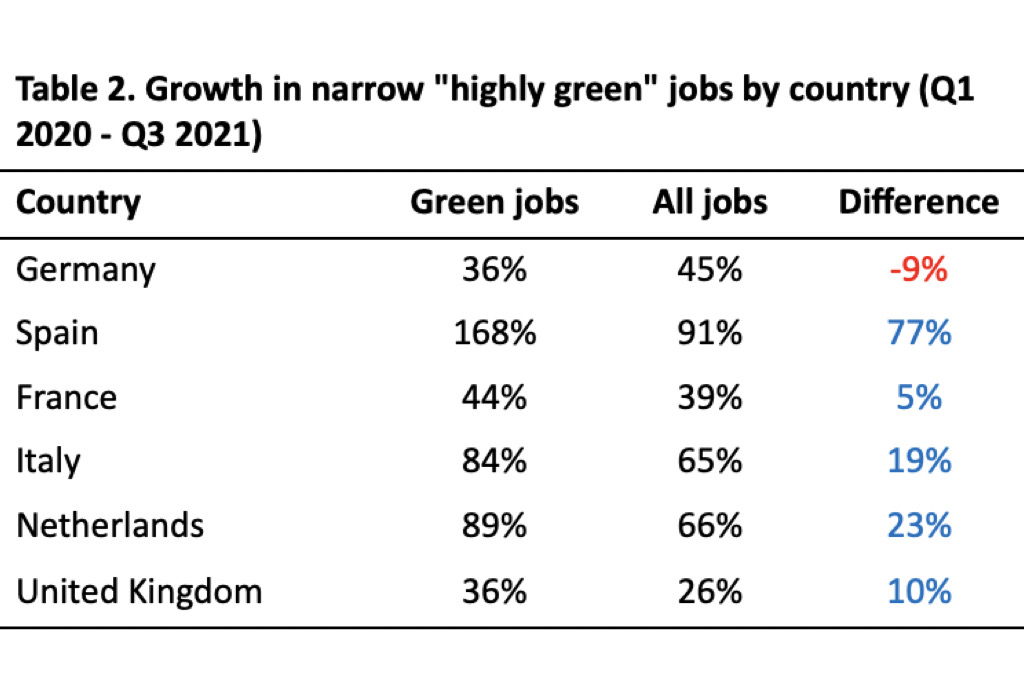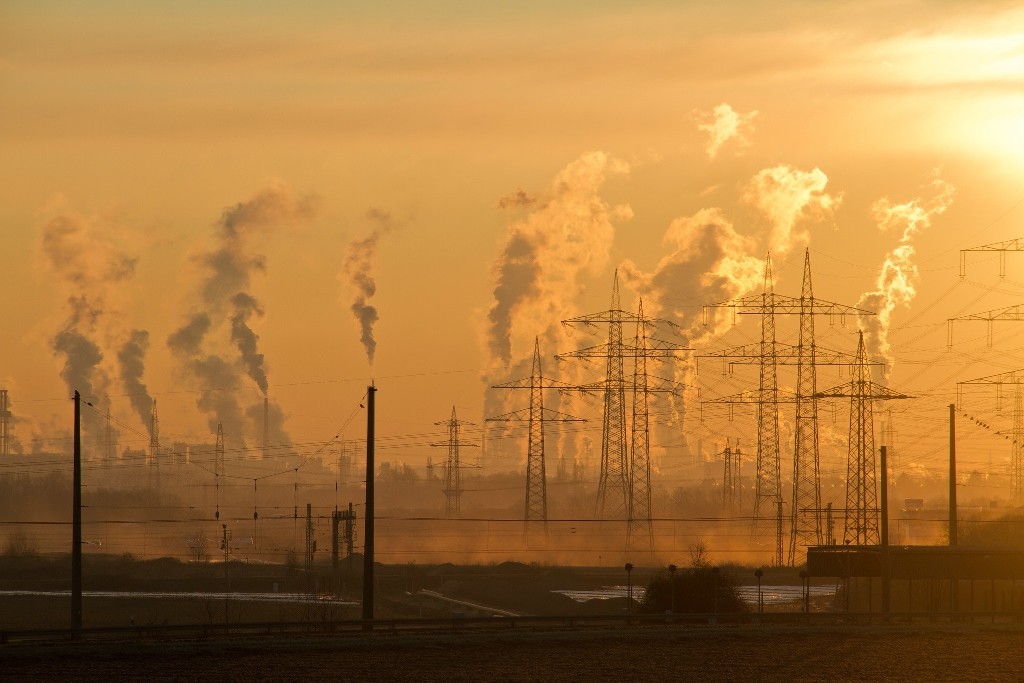For 50 years, people around the world have celebrated Earth Day on April 22. This year’s theme—“Invest in Our Planet”—is a call for a “partnership for our planet,” including governments, businesses, and citizens. In the world of work, this means a greater shift toward careers that help protect and sustain the Earth, and providing the appropriate education to develop the skill sets needed for the transition to green jobs for a green economy.
April 22, 2022
Wellbeing
SUSTAINABILITY
Future of Skills
It is abundantly clear that many traditional practices and attitudes surrounding production and consumption are environmentally unsustainable. Jobs that have long directly or indirectly caused the degradation and depletion of the Earth’s resources need to shift to zero-carbon practices, and new jobs must be developed that protect our planet. Creating a green economy built on green jobs is urgent and necessary–but how much closer are we to achieving these goals?
The green transition is a global requirement but what exactly makes a job green? Does it mean working directly in the environment sector, or simply not working for organizations that cause direct harm to the planet? Assessing our progress in the green transition at work requires a clear definition.
Since it was first published in 2010, the standard definition frequently used in reports studying the green economy comes from the Bureau of Labor Statistics, which states that green jobs are either: (a) Jobs in businesses that produce goods or provide services that benefit the environment or conserve natural resources; or (b) Jobs in which workers' duties involve making their establishment's production processes more environmentally friendly or use fewer natural resources.
The most in-demand green jobs in 2021 included environmental specialist, civil engineer, forester, environmental technician, solar photovoltaic installer, and arborist. But now, “greenness” in work exists somewhat on a spectrum. As awareness of the urgency of climate change increases, more sectors are shifting to low-carbon practices and models, making space for a broader definition of “green” jobs.
However, we must focus on more than job titles when considering how green a job is. Developing green skills that can be applied to jobs that may not be directly considered green is also crucial. According to one study, over the last five years there has been double-digit growth across dozens of green skills, the fastest growing being ecosystem management, environmental policy, and pollution prevention.
The pandemic changed across the board how we work and where we work, and brought new urgency to the climate crisis, because many of the root causes of climate change also increase our likelihood of creating pandemics. The lessons we learned and the new ways of thinking we adopted are evident in the way we are prioritizing the green transition in work.
Here are the latest data in green job growth, between Q1 2020 to Q3 2021, according to Skills Predict by the Adecco Group. The growth is measured by the number of green jobs posted online.
What makes a job green?
The green transition is a global requirement but what exactly makes a job green? Does it mean working directly in the environment sector, or simply not working for organizations that cause direct harm to the planet? Assessing our progress in the green transition at work requires a clear definition.
Since it was first published in 2010, the standard definition frequently used in reports studying the green economy comes from the Bureau of Labor Statistics, which states that green jobs are either: (a) Jobs in businesses that produce goods or provide services that benefit the environment or conserve natural resources; or (b) Jobs in which workers' duties involve making their establishment's production processes more environmentally friendly or use fewer natural resources.
The most in-demand green jobs in 2021 included environmental specialist, civil engineer, forester, environmental technician, solar photovoltaic installer, and arborist. But now, “greenness” in work exists somewhat on a spectrum. As awareness of the urgency of climate change increases, more sectors are shifting to low-carbon practices and models, making space for a broader definition of “green” jobs.
However, we must focus on more than job titles when considering how green a job is. Developing green skills that can be applied to jobs that may not be directly considered green is also crucial. According to one study, over the last five years there has been double-digit growth across dozens of green skills, the fastest growing being ecosystem management, environmental policy, and pollution prevention.
How green are we becoming at work?
The pandemic changed across the board how we work and where we work, and brought new urgency to the climate crisis, because many of the root causes of climate change also increase our likelihood of creating pandemics. The lessons we learned and the new ways of thinking we adopted are evident in the way we are prioritizing the green transition in work.
Here are the latest data in green job growth, between Q1 2020 to Q3 2021, according to Skills Predict by the Adecco Group. The growth is measured by the number of green jobs posted online.

The disruption of the pandemic provided an opportunity for companies to accelerate their own green transitions as many governments made additional financial support available for a “green restart,” seemingly with success. Our labour market intelligence tool Skill Predict by the Adecco Group highlights that especially highly green jobs recovered faster than overall job growth.
Spain, in particular, saw a 168% jump in green job postings over the recent years. It’s a growing trend in Spain, too. The Spanish government will allocate more than 7.5 million Euros to more than 66 projects that fuel the green economy and reskilling opportunities. That means projects like organic farming, renaturalization and restoration, sustainable forest management, among others. These projects will help train more than 7,000 people.
Outside of Europe, other countries are also investing in the green transition. For example, South Korea has pledged to create create 1.9 million jobs by 2025, with a plan that focuses renewable energy and green infrastructure. Morocco’s Generation Green 2020-2030 initiative has a goal of creating around 350,000 jobs in agriculture, fisheries, and other related areas, primarily for younger workers. And countries across Sub-Saharan Africa are supported by the World Bank in nature-based public work schemes that also reduce food insecurity and create temporary jobs for the poorest households.
As we transition out of the worst of the pandemic and return to the oft-referenced “new normal,” we see a considerable increase on the demand for green jobs in Europe. It’s important that across sectors, all focus remains on Earth-friendly practices that protect our planet, health, and well-being. We also need to make sure that this is an inclusive process that does not leave those behind that currently depend on unsustainable jobs. Upskilling and reskilling people for the green transition will be crucial. On Earth Day and every day, the momentum toward a green economy must continue to build, and it must be everyone’s priority.
Spain, in particular, saw a 168% jump in green job postings over the recent years. It’s a growing trend in Spain, too. The Spanish government will allocate more than 7.5 million Euros to more than 66 projects that fuel the green economy and reskilling opportunities. That means projects like organic farming, renaturalization and restoration, sustainable forest management, among others. These projects will help train more than 7,000 people.
Outside of Europe, other countries are also investing in the green transition. For example, South Korea has pledged to create create 1.9 million jobs by 2025, with a plan that focuses renewable energy and green infrastructure. Morocco’s Generation Green 2020-2030 initiative has a goal of creating around 350,000 jobs in agriculture, fisheries, and other related areas, primarily for younger workers. And countries across Sub-Saharan Africa are supported by the World Bank in nature-based public work schemes that also reduce food insecurity and create temporary jobs for the poorest households.
Takeaways: The Green Transition
As we transition out of the worst of the pandemic and return to the oft-referenced “new normal,” we see a considerable increase on the demand for green jobs in Europe. It’s important that across sectors, all focus remains on Earth-friendly practices that protect our planet, health, and well-being. We also need to make sure that this is an inclusive process that does not leave those behind that currently depend on unsustainable jobs. Upskilling and reskilling people for the green transition will be crucial. On Earth Day and every day, the momentum toward a green economy must continue to build, and it must be everyone’s priority.



